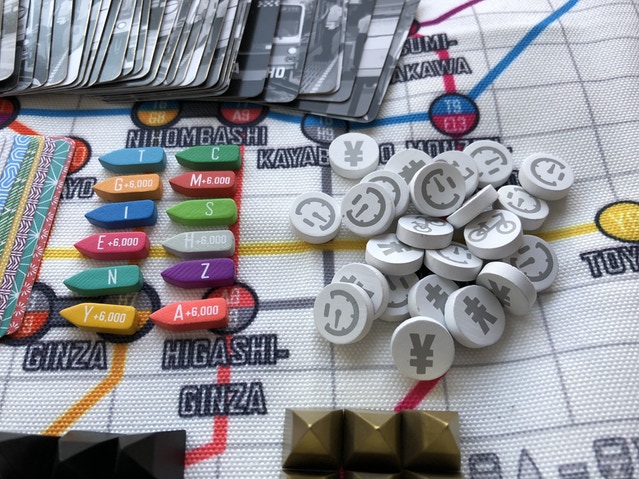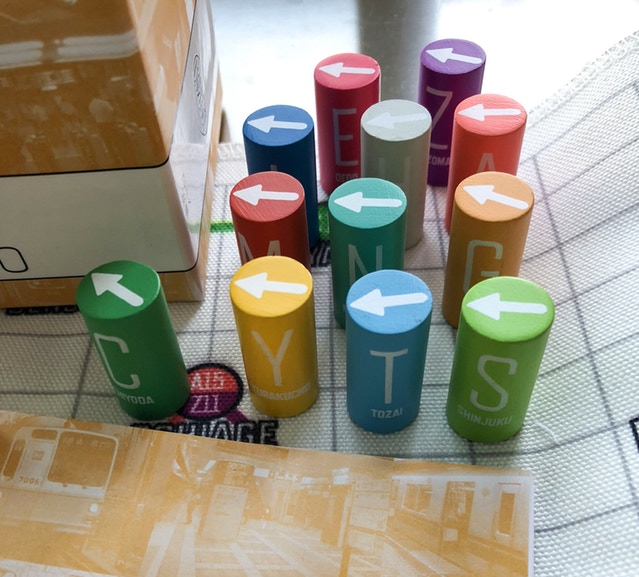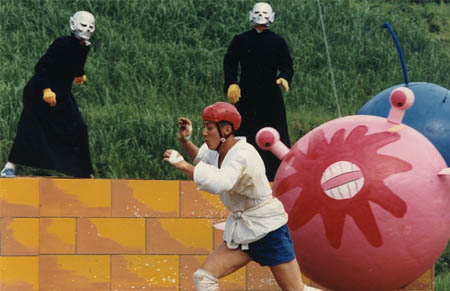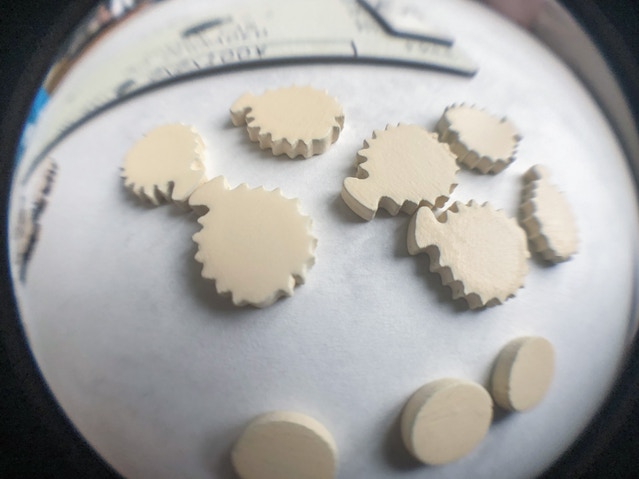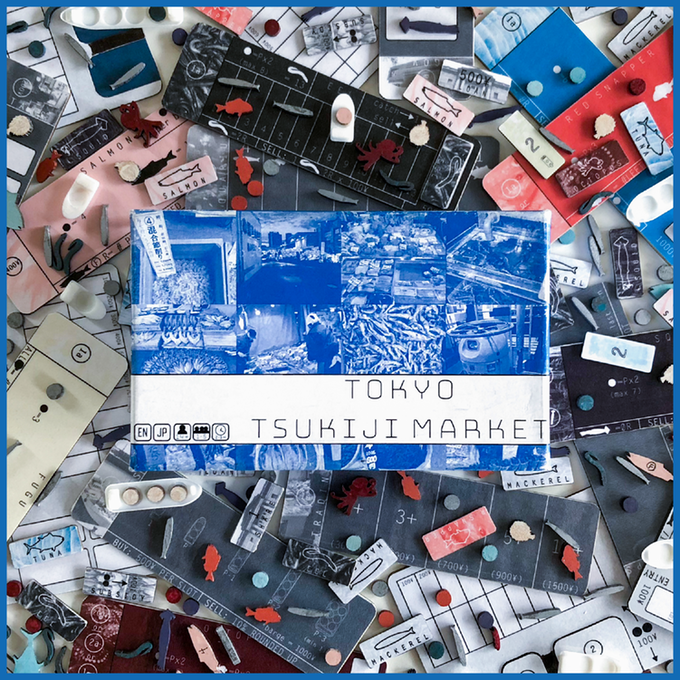As a designer, Jordan Draper has only been at it a few years, but it hasn’t taken long for him to develop a devoted following among the indie gaming crowd. Since his initial Kickstarter campaign in 2016 he has already, or is in the process of, publishing roughly a dozen games, all with a distinctive style that distinguishes themselves as his creations. Informed by his profession, his experiences traveling abroad, and his penchant for approaching game design as a work of art as much as something to play with, Jordan has quickly established himself in the community. And with a recently launched Kickstarter for the next three games in his TOKYO series line, that doesn’t appear to be changing anytime soon.
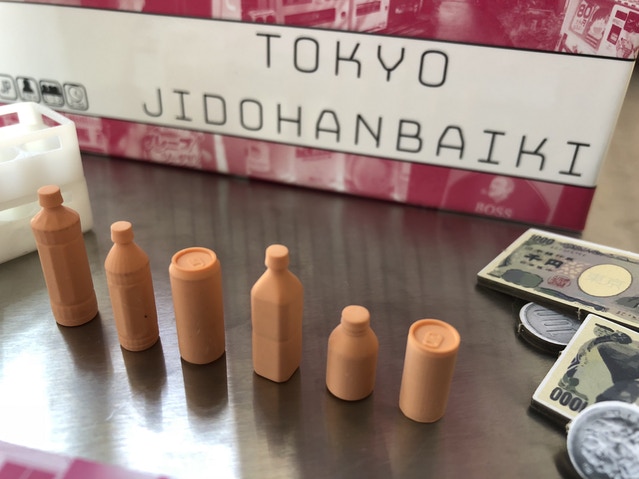 We first noticed Jordan’s work with the release of the weighty economic shipping game Import / Export (then under the brand name Dark Flight), a title with a surprising amount of heft in a fairly small box, which was quickly followed up by the wildly successful initial trio of TOKYO games, each their own flavor, weight class, and theme. From the lightweight zaniness of vending machines, to an architecturally-focused dexterity game, to a meaty Euro about public transit, Jordan’s unconventional themes and game styles offer something to a wide variety of audiences while still maintaining a personal yet distinctive artistic flair. And if his successes prove anything, it’s that audiences have been receptive to them.
We first noticed Jordan’s work with the release of the weighty economic shipping game Import / Export (then under the brand name Dark Flight), a title with a surprising amount of heft in a fairly small box, which was quickly followed up by the wildly successful initial trio of TOKYO games, each their own flavor, weight class, and theme. From the lightweight zaniness of vending machines, to an architecturally-focused dexterity game, to a meaty Euro about public transit, Jordan’s unconventional themes and game styles offer something to a wide variety of audiences while still maintaining a personal yet distinctive artistic flair. And if his successes prove anything, it’s that audiences have been receptive to them.
With more games on the way, we thought it an opportune time to finally chat with Jordan and see if we can’t learn a little bit more about how he approaches game design, how he reaches some of his decisions, and why his games seems to resonate – both with himself and others. So we did. And today we’re here to share that with you.
Enjoy!
[sc:bar]
CR: You’ve often said your games are inspired by your experiences while working and traveling. Can you describe the process for capturing an experience and turning it into a game?
Most of the time it happens organically, I’ll be in a situation that sparks an idea for either a new mechanic or concept. I get most of my inspiration and excitement in life from finding new things and visiting new places, so when I’m in that environment it’s much easier for me to come up with ideas on the fly.
CR: Of all your games to date, which one has the most unique origin story?
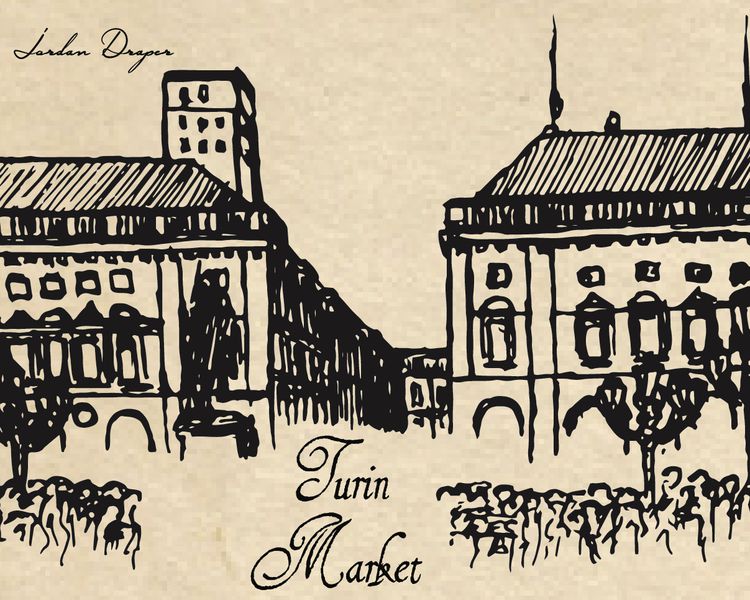 Turin Market probably was the most unique. I was out biking in Italy one night with nowhere in particular to go, and I came across several thousand people in a massive square dressed all in white having a feast! I whipped out my pen and journal, and the cover on the box was born, along with the idea for the game (that same area has been used as a weekend food market for centuries).
Turin Market probably was the most unique. I was out biking in Italy one night with nowhere in particular to go, and I came across several thousand people in a massive square dressed all in white having a feast! I whipped out my pen and journal, and the cover on the box was born, along with the idea for the game (that same area has been used as a weekend food market for centuries).
CR: Most of your games, while meticulously designed, come with a markedly minimalist look to them. Is this a deliberate choice on your part, and if so, what makes that your preference?
I think it would be impossible to design something minimal and meticulous without intention actually. For me it stems from a distaste for the overwhelming poorly planned and produced items in America and China, which are mostly consumed and thrown away anyway. If I design something, it should be with intention to be kept for a long time, and appreciated so that it doesn’t end up in the trash any day soon. I believe you should have a strong healthy relationship with the objects you own, and anything you don’t use often you shouldn’t have.
CR: Your catalog of game designs range significantly in style from quick, goofy social games, to dexterity games, to serious economic simulations. Is it easier for you to pick a theme first and design the mechanics around it, or vice versa?
I would say I hit both ends of that, with a slight preference for theme first. I find myself designing theme first more and more. When I design my heavier economic games, they are almost always mechanically driven, however, because something with that weight has to be very well thought out from a technical standpoint and could probably be re-themed in a dozen different directions.
CR: Are there any game themes you tried to design around initially but had to drastically change or stop because you couldn’t get your personal feel of the game to properly come across?
Definitely; I’ve thrown away quite a few designs. There was one game about life in the sea that showcased many different types of plants and animals that I was inspired to make after thinking more about my dad giving up on becoming a marine biologist. It was a dice drafting combat game co-designed with Nick Halper (we also made Poison Bottles together). After heavy work for 6-7 months, full artwork, and a very fluid working prototype, I came to the realization that the game just didn’t have a magic spark to it. I’m always ok to cut the games that don’t inspire me personally, although it’s hard after working for so long on something.
CR: Your ‘Tokyo’ line of games are probably your best known titles. For those who aren’t familiar with them, what are the Tokyo games all about?
Life in Tokyo! They all have a very unique theme that I find fascinating about Tokyo (and are about to get a lot more specific from here btw), and range in mechanics and gameplay. The best part is you can mix the various games together to play new games. With the release of the next three games, if you count TOKYO GAME SHOW there are technically just shy of 100 separate games you can play in the whole series!
CR: On that point, Tokyo Jidohanbaiki is unique in that it’s not just one game but a multitude of mini-games in one. What prompted you to go the medley route with that one?
I wanted to challenge myself, and see what would happen if other designers I respect made a game using the same pieces I was using. It has inspired me to think of components in new ways, and as a rule I always make the game components for the guest designer games before thinking of any game mechanics or ideas for gameplay. TOKYO COIN LAUNDRY has some very special games in it too, including an RPG I co-designed with Luke Crane.
CR: The first three Tokyo games also are known for being able to integrate with one another to create a single massive gameplay experience. What sort of challenges did you have trying to tie three games with disparate themes and mechanics together?
It was actually easier than I expected. They are all pieces of the magic that is Tokyo, so I could conceptualize themes that made sense by mixing them together. Mechanically, that was a bit of trial and error but has been working great up to this point.
CR: You recently launched your latest Kickstarter for the second wave of ‘Tokyo’ games. What are the premises behind each of this new game trio?
COIN LAUNDRY: This is about laundromats in Tokyo, which have many differences from ones you will find in the US.
TSUKIJI MARKET: A game about fish markets. This had a natural fit for a heavier economic game, and I borrowed inspiration from one of my favorite games, Container, but with the aspects of it fixed and expanded much farther in new directions.
GAME SHOW: This game came from my inner desire to be on a game show and watching Japanese games shows like Takeshi’s Castle for years while growing up. It brings the silly magic of Japan into a tabletop experience, and wow is it fiery and competitive in a fun way!
CR: Tokyo Coin Laundry – presumably all about a variety of laundromat-themed games – is another title with an assortment of mini-games. Of those, which is your personal favorite?
Definitely the Coin Laundry RPG. It has you building a quirky Japanese character and then complaining and complementing people inside of a laundromat with all kinds of twists.
CR: We’re assuming Tokyo Game Show plays out exactly how it sounds, which feels just ripe for ridiculousness and amusing moments. How did you go about trying to capture the essence and energy of a Japanese game show, which are known for being rather…unique?
I did a lot of heavy creative brainstorming, which I’m excellent at. I don’t know that I am the best at any one thing in life, but creative brainstorming, that’s my specialty. Everything else came from running these miniature game show games (aka social experiments as Joe Wiggins calls them), and seeing what they felt like. Early playtesting erupted into everything from yelling to people lying on the ground laughing. So, it’s been a success, haha.
CR: Finally, if there was one unified message you’d want the average gamer to take away from the games you make, what do you hope it to be?
To keep an open mind and try games that seem ridiculous. If you play a game and it makes you uncomfortable, that’s a beautiful opportunity to grow as a person.
Photo Credits: Game cover art and photos by Jordan Draper Games.

